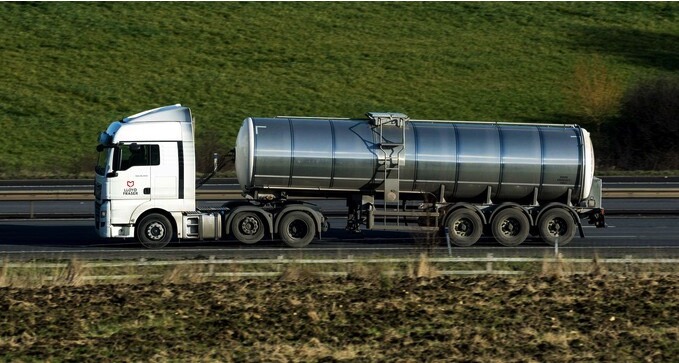The latest official Defra milk price for August is 36.22ppl at 4.17% fat and 3.37% protein, or 35.4p on a standard 4% fat, 3.3% protein standard litre
Milk prices have continued to fall in October and November, with 10 processors reducing in October and another seven for November. Of those only Saputo has cut for both months.
The estimated non-aligned weighted average price for October is now estimated at 34.6p, with six processors paying 34-35p; 11 paying 35-36p and nine paying 36-37p. The average price for November is 34.4p. This is the lowest price since January 2022.
Commodity prices are, however, increasing, which should help stabilise the situation.
The latest AMPE figure for September is 28.82p, which is up 0.2p on August. After an allowance for a margin and additional supply chain costs a reasonable farmgate equivalent would be less than 25p. The gross MCVE figure is 33.39p before costs and a margin, which is a drop of 0.75p, with the net value being less than 30p now. This is the lowest level since August 2021.
Commodity prices lift as market sentiment improves
Commodity prices are increasing on the back of increasingly positive sentiment.
The GDT auction has increased for three consecutive auctions, and Fonterra has subsequently increased its milk price forecast for the season slightly.
At the time of writing the market making Dutch butter had just increased by €200 (£173) to €4,750 (£4,099), its highest price since June.
Dutch SMP was up by nearly €100 (£86) to €2,400 (£2,071), with food grade having risen for four consecutive weeks, and feed grade for six.
In milk price terms butter and SMP convert into an AMPE price of 29p now, which is up from a recent low of 25.7p in September.
Cream is also on a positive roll, with EU prices up €1,600/t (£1,381/t) over eight weeks to €6,650/t (£5,739/t), or equivalent to £2.30/kg in the UK. But it is not that here; loads in the week of going to press went from £1.83 mid-week, to as high as £1.91 by the end. And that was not even for the export market, which usually commands a premium. At these prices no processor is going to make butter, which will again help tighten stocks and firm prices.
Cheddar, though, is still very much in the doldrums. Prices now are back to where they were two years ago at £3,100 for Irish mild at the lowest level, and UK supplies only slightly higher.
Taking costs into account the effective price is actually nearer to £2,800, as estimates say the cost of making cheddar is up to £300 a tonne more than it was two years ago. It hasn not been as low as that since December 2019.
However, higher butter and SMP prices will also mean more milk will move out of cheese on the continent and back into butter, again tightening up the situation.
Gouda and curd prices are already increasing too, which will help cheddar as there is pretty much parity in price now.
Lloyd Fraser collapse results in 1.6m of dumped milk
Milk volumes over the last two weeks look as if they have plummeted significantly, but the reality is they have not.
The drop can be accounted for by the sudden collapse of haulier Lloyd Fraser on 22 September, which resulted in 1.6m litres to 1.8m litres of milk being dumped.
On the 21 September (the day before the administrators were called in) the daily volume in GB was 32.257m litres, and the following day volumes were 32.795m litres. Collections on the 22 Septmber were 30.646m litres, down 1.6m litres.
With those Lloyd Fraser losses factored in production over the last two weeks averaged 37.96m litres per day, down 876,400 litres and 2.26% on last year, while GB volumes averaged 32.2m litres per day, down 809,300 litres and 2.45%.
Without those losses, GB milk volumes would have averaged 32.21m litres per day, some 196,505 litres and 0.61% more than last year.
Futures price lift steadily to return over 30p
EU and New Zealand futures prices have continued to increase steadily, with the average price for butter over the next six months being €4,950 (£4,271), and that for New Zealand being €4,800 (£4,142). SMP prices average €2,670 (£2,304) and €2,700 (£2,330) respectively.
When converted to a UK milk price the contracts equate to a price of 30ppl for October, rising to 34.5p for next March. These prices are some 3ppl more than they were a month ago, and are now at their highest prices since the spring.
GDT posts hat trick of increases
There is a hat trick of gains for sellers to celebrate on the main auction at last. We have got to go back to early 2022 for the last time that happened.
The average price at the last main auction in early October crossed the $3,100 (£2,523) threshold for the first since August, with WMP over $2,900 (£2,360) and SMP over $2,500 (£2,035) again, with Arla’s over $2,600 (£2,116) – the first time it has been over this level since June.
The second week of October then saw the first intermittent ‘pulse’ auction of both WMP and SMP, with both commodities increasing in price by a decent $70/t (£57/t) or so.
The GDT commodities convert into an approximate UK milk price equivalent of 29p, which is up 1.67p on the previous auction. This includes a heavy weighting for WMP, though, which we do not produce in the UK. The AMPE equivalent price from butter and SMP is over 30p.
As a result of the improved auctions Fonterra has lifted its 2023/24 season forecast milk price by 50 cents to $6.50 – $8.00 (£3.19-3.92) per kg solids,, with a new midpoint of $7.25 (£.55). This is equivalent to about 28p.
Fonterra CEO Miles Hurrell says the improved outlook reflects both supply and demand dynamics.
Source : Farmers Guardian



